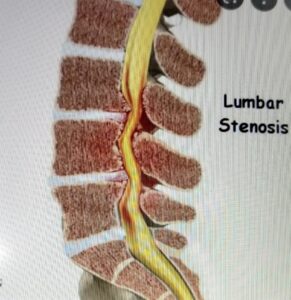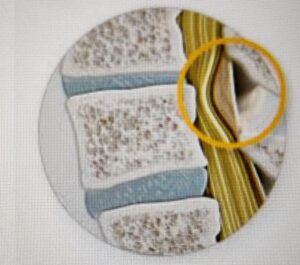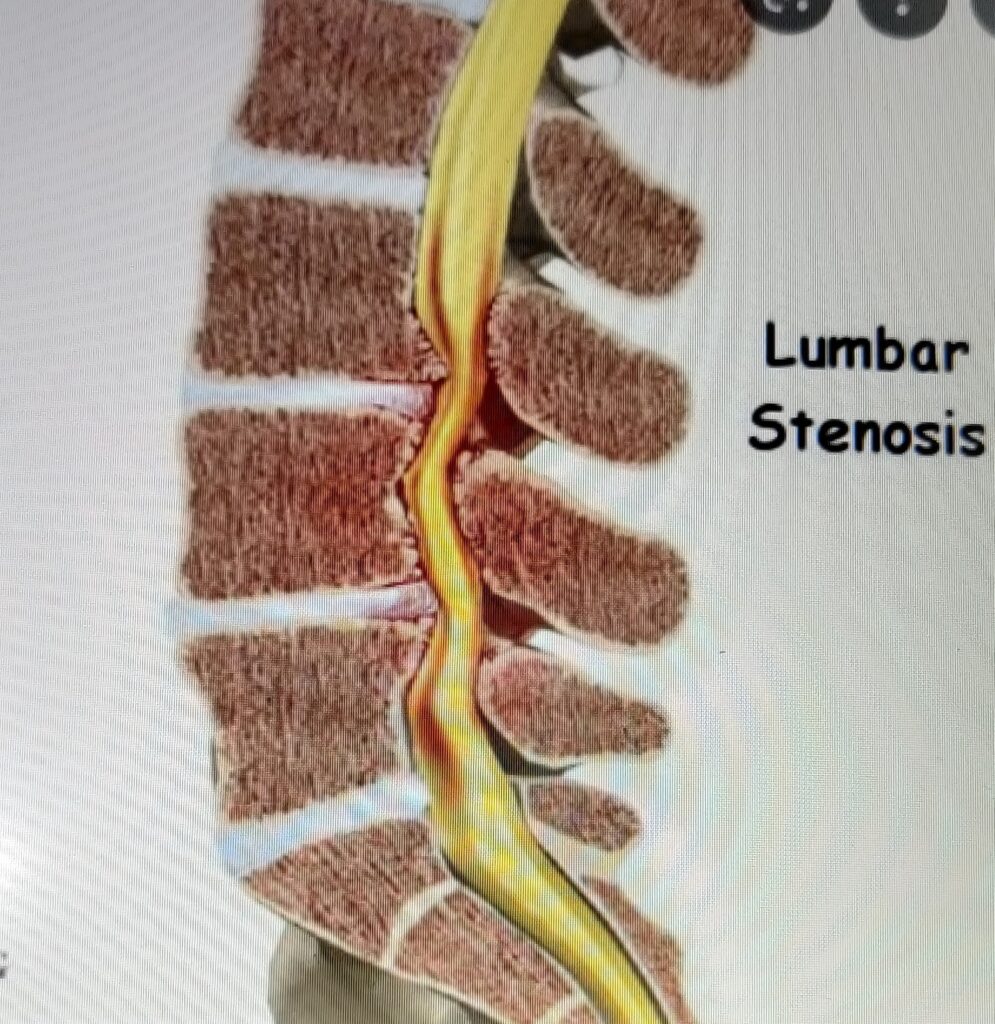Lumbar Canal Stenosis

Lumbar canal stenosis is a condition where the diameter (midsagittal) of the spinal canal in the Lumbar region (Lower part of Back) is decreased less than a critical value which is 10 mm or less. This is called absolute stenosis. If diameter is between 10 to 12 mm, this is called Relative canal stenosis. Decrease in canal diameter of the lumbar spine lead to pressure over the nerve roots passing through the spinal canal. This pressure is reflected first as compromise of blood supply of the nerves and subsequently pressure over the nerves lead to adverse changes in the nerve cells. Due to these changes, patient has pain and numbness in the legs.
Causes
- Lumbar Canal stenosis can be a developmental condition of spine
- Most commonly this is an acquired condition.
- Conditions which lead to decrease in canal diameter can be
- Trauma or injury to spine,
- Spondylarthrosis or degenerative changes occurring with advancing age,
- Intervertebral disc herniations.
Symptoms
- Low back pain
- low back pain with pain in the buttocks spreading diffusely down the lower extremities.
- Neurogenic claudication is important symptom. Ability to walk becomes rapidly compromised over a period of time and distance travelled becomes progressively shorter.
- Symptoms also appear when patient assumes any position which decreases canal diameter like standing or walking.
- Position of the lumbar spine which increases the diameter of the spine gives relief of symptoms to the patient like bending forward.
- In some patients, pain is not the dominant symptoms but numbness in the lower limbs is more pronounced.
- In long standing cases, there may be weakness in the toes or lower limbs.
- In the presence of a herniated disc, symptoms resemble that of typical discal extrusion like severe radicular pain, cauda equina syndrome.
Diagnosis
- With availability of MRI scanning, diagnosis of Lumbar canal stenosis can be made with accuracy in most of the patients with symptoms of back pain or leg pain / numbness.
- MRI helps to precisely define the extent and level of canal stenosis.
- CT scan and X-ray may be supplemented to further define the bony landmarks of spine canal and in some cases of instability of lumbar spine.
Treatment
Medical treatment
As Lumbar Canal Stenosis is consequent to Degenerative changes in the spine or following intervertebral disc prolapse, patient has pain in the back or pain in one or both legs.
Conservative measures like medication, hot packs, physiotherapy and bed rest do help in relieving the symptoms. Backache is rarely disabling and is usually responsive to these conservative measures.
Surgical Treatment
Surgery is required if
- Lumbar canal stenosis is severe (as revealed by MRI imaging) and patient has progressive claudication symptoms in the legs where walking distance decreases over a period of time.
- Person has difficulty in carrying out activities of daily life
- If Lumbar canal stenosis develops after disc prolapse and causes severe radicular pain or Cauda Equina syndrome where patient has numbness in the legs and may not have control over bladder or bowels.
Rationale Behind LCS surgery
- Structures forming boundaries of spinal canal are rigid or hard and structures passing through the spinal canal are very delicate and soft spinal nerve roots.
- In Lumbar Canal stenosis diameter of the spinal canal becomes very narrow and contained nerve roots get squeezed in narrow space.
- When we perform activities like walking, blood flow to the nerve roots increases but there is no space to accommodate the increased volume. As a result patient feels pain in the distribution of nerve roots.
- There is no medicine which can increase the diameter of the spinal canal or make spinal canal space wider. The only option left is widening the canal mechanically by intervention or surgery.

With availability of advanced diagnostic tools like MRI and CT scans, exact location of spinal canal stenosis can be seen and precise diagnosis can be made. Accurate diagnosis and operating microscopes have made surgery for spinal canal stenosis very effective and successful.

